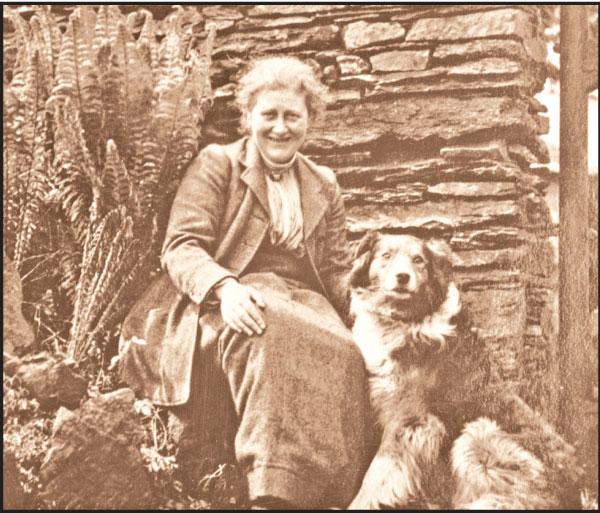
Peter Rabbit, Benjamin Bunny, the Flopsy Bunnies, Squirrel Nutkin and Jemima Puddle Duck have delighted children and even adults since 1902, when The Tale of Peter Rabbit was first published. The Beatrix Potter characters are so famous that the Royal Mint in England has minted coins featuring them.
 |
| Peter Rabbit - Royal Mint smash |
Who has given the children of the world such delightful companions in life? It is Beatrix Potter, an English lady who had a great love for the countryside, environment and flora and fauna.
Beatrix Potter, christened as Helen Beatrix Potter was a child of Rupert and Helen Potter. Like many upper class English girls, Beatrix was taught at home by governesses, to one of whom Annie Moore Beatrix became very close and remained so all her life.
Beatrix and her younger brother Walter Bertram were encouraged to draw. Their models were often their pets.
 |
| Flopsy, Mopsy and Cotton-tail, the three bunnies |
During the holidays in Scotland, Beatrix and Walter Bertram were allowed to go for walks and explore the countryside and Beatrix learnt to observe plants, fungi, animals and insects and draw them. She was also invited to study fungi at the Royal Botanical Gardens in Kew.
Her botanical drawings were beautiful and detailed. A much respected Scottish naturalist, Charles Mac Intosh helped Beatrix make her drawings of fungi more accurate and she drew many beautiful water colours. She also became a good scientific illustrator and was recognised for her work in Mycology or the scientific study of fungi .
The high points of Beatrix’s life were the holidays in Scotland and the Lake District. When she was around 16 years, her parents took Beatrix on holiday to the Lake District . They stayed at Wray Castle overlooking Lake Windermere and this is where Beatrix’s love affair with the countryside really blossomed.
 Two of Beatrix’s pet bunnies were early artist’s models for her drawings. Benjamin Bouncer was a pet bunny who loved buttered toast and went with the Potter family on Scottish holidays where he went on walks on a lead. The other, Peter Piper could perform tricks and accompanied Beatrix everywhere.
Two of Beatrix’s pet bunnies were early artist’s models for her drawings. Benjamin Bouncer was a pet bunny who loved buttered toast and went with the Potter family on Scottish holidays where he went on walks on a lead. The other, Peter Piper could perform tricks and accompanied Beatrix everywhere.
Beatrix was also a good illustrator and she did a series of illustrations about frogs for Changing Pictures, an annual published by art publisher Ernest Nister.
In 1893, when Beatrix was 27-years-old she went on holiday to Eastwood, Dunkeld, Perthshire and was writing to Noel Moore, her former Governess Annie Moore’s son who was often ill. She ran out of things to tell him so she wrote him a story about four little bunnies named Flopsy, Mopsy, Cotton Tail and Peter and illustrated it too. This was the original Peter Rabbit story.
After the story was rejected by several publishers Beatrix Potter decided to publish it for family and friends and she had 250 copies printed of the Tale of Peter Rabbit and published in 1901. It was an instant hit and this led Frederick Warne & Co which had earlier rejected the story decided to publish it . It was a best seller. Beatrix Potter wrote Squirrel Nutkin and the Tailor of Gloucester the following year.
Beatrix Potter wrote thirty books and her 23 children’s books were the most popular and the bestsellers . Among them are: The Tale of Peter Rabbit, The Tale of Benjamin Bunny, The Tale of the Flopsy Bunnies and The Tale of Mrs. Tiggy Winkle and the Tale of Squirrel Nutkin. The Tale of Peter Rabbits tells of a naughty bunny’s escapades in a farmer named McGregor’s garden while in Squirrel Nutkin you will read about how he lost his tail while plucking berries with his brother.
Beatrix Potter moved to the Lake District. She bought a Hill Top farm near Sawrey which was then in Lancashire. It featured in many of her tales. She bequeathed it to the National Trust with her other 14 farms and said that it should be kept as it is.
She died on December 22, 1943 leaving over four-thousand acres and her farms to the National Trust with whom she worked closely during her lifetime.

